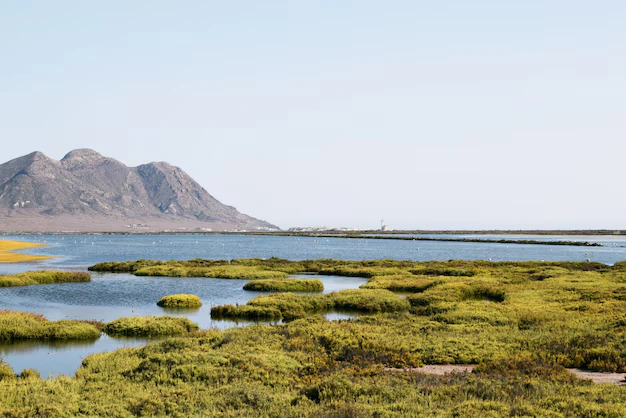
Ramsar Sites are wetlands of international importance designated under the Ramsar Convention, an international treaty adopted in 1971 to conserve and sustainably use wetlands. India has a rich diversity of wetlands, and as of now, it has 85 Ramsar sites, making it one of the leading countries in South Asia in terms of Ramsar designations.
Ramsar Convention on Wetlands
The Ramsar Convention is an international treaty adopted in 1971 in Ramsar, Iran, aimed at the conservation and sustainable use of wetlands. It is officially called the “Convention on Wetlands of International Importance, especially as Waterfowl Habitat.”
Objectives of the Ramsar Convention
The primary objectives are:
- Conservation and Wise Use of Wetlands
- Ensuring the ecological character of wetlands is maintained.
- Sustainable Development
- Promoting sustainable utilization of wetlands for the benefit of humankind.
- International Cooperation
- Encouraging collaboration between nations to manage transboundary wetlands and species.
Key Features of the Convention
- Wetlands of International Importance (Ramsar Sites)
- Member countries designate wetlands within their territories as Ramsar Sites. These sites are recognized for their unique ecological, cultural, and hydrological value.
- Three Pillars of the Convention:
- Wise use of all wetlands.
- Designation and management of Ramsar Sites.
- International cooperation.
- Montreux Record
- A register of Ramsar Sites where ecological character is under threat due to changes like pollution or human interference.
- Ramsar Criteria for Wetland Designation
- Wetlands are designated based on criteria such as biodiversity, waterfowl populations, or ecological uniqueness.
India and the Ramsar Convention
- India’s Role
- India became a signatory in 1982 and has been actively participating in conservation efforts.
- Ramsar Sites in India
- India has 85 Ramsar Sites (as of 2024), the highest in South Asia.
- Key Ramsar Sites in India
- Chilika Lake (Odisha): First Ramsar Site in India (1981).
- Sundarbans Wetland (West Bengal): Largest Ramsar Site in India.
Significance of Ramsar Convention
- Biodiversity Conservation
- Protects habitats for endangered species, including migratory birds.
- Flood and Climate Control
- Wetlands absorb excess rainfall and act as carbon sinks.
- Water Resource Management
- Preserves freshwater systems crucial for human and ecological health.
- Cultural and Economic Benefits
- Wetlands provide livelihoods, tourism opportunities, and spiritual significance.
Challenges in Implementing Ramsar Goals
- Urbanization and Pollution
- Wetlands face threats from industrial waste, agriculture, and urban expansion.
- Climate Change
- Rising temperatures, erratic rainfall, and sea level rise affect wetland ecosystems.
- Insufficient Funding and Awareness
- Lack of adequate resources for effective management.
- Encroachment and Overexploitation
- Illegal constructions and unsustainable resource extraction.
Key Global Facts
- Member Countries
- 172 countries are parties to the Ramsar Convention (as of 2024).
- Ramsar Sites Worldwide
- Over 2,500 sites covering more than 250 million hectares.
List of Ramsar Sites in India
Andhra Pradesh (1): Kolleru Lake
Assam (1): Deepor Beel
Bihar (3): Kanwar Lake, Nagi Bird Sanctuary, Nakti Lake
Goa (1): Nanda Lake
Gujarat (4): Khijadiya, Nalsarovar, Thol Lake, Wadhvana Wetland
Haryana (2): Sultanpur National Park, Bhindawas Wildlife Sanctuary
Himachal Pradesh (3): Chandra Taal, Pong Dam Lake Wildlife Sanctuary, Renuka Lake
Jammu and Kashmir (5): Hokersar Wetland, Hygam Wetland Conservation Reserve, Shallabugh Wetland, Mansar-Surinsar Wildlife Sanctuary, Wular Lake
Karnataka (4): Ranganathittu Bird Sanctuary, Ankasamudra Bird Conservation Reserve, Aghanashini Estuary, Magadi Kere Conservation Reserve
Kerala (3): Ashtamudi Wetland, Sasthamkotta Lake, Vembanad-Kol Wetland
Ladakh (2): Tso Kar, Tsomoriri Lake
Madhya Pradesh (5): Bhoj Wetland, Sakhya Sagar, Sirpur Lake, Yashwant Sagar, Tawa Reservoir
Maharashtra (3): Lonar Lake, Nandur Madhameshwar, Thane Creek
Manipur (1): Loktak Lake
Mizoram (1): Pala Wetland
Odisha (6): Ansupa Lake, Bhitarkanika Mangroves, Chilika Lake, Hirakud Reservoir, Satkosia Gorge, Tampara Lake
Punjab (6): Beas Conservation Reserve, Harike Wetland, Kanjli Wetland, Keshopur-Miani Community Reserve, Nangal Wildlife Sanctuary, Ropar Wetland
Rajasthan (2): Keoladeo National Park, Sambhar Lake
Tamil Nadu (18): Chitrangudi Bird Sanctuary, Gulf of Mannar Marine Biosphere Reserve, Kanjirankulam Bird Sanctuary, Karaivetti Bird Sanctuary, Karikili Bird Sanctuary, Koonthankulam Bird Sanctuary, Longwood Shola Reserve Forest, Pallikarnai Marsh Reserve Forest, Pichavaram Mangrove, Point Calimere Wildlife and Bird Sanctuary, Suchindram Theroor Wetland Complex, Udhayamarthandapuram Bird Sanctuary, Vadavur Bird Sanctuary, Vedanthangal Bird Sanctuary, Vellode Bird Sanctuary, Vembannur Wetland Complex, Nanjarayan Bird Sanctuary, Kazhuveli Bird Sanctuary
Tripura (1): Rudrasagar Lake
Uttar Pradesh (10): Bakhira Sanctuary, Haiderpur Wetland, Nawabganj Bird Sanctuary, Parvati Arga Bird Sanctuary, Saman Bird Sanctuary, Samaspur Bird Sanctuary, Sandi Bird Sanctuary, Sarsai Nawar Jheel, Sur Sarovar, Upper Ganga River
Uttarakhand (1): Asan Barrage
West Bengal (2): East Kolkata Wetlands, Sundarban Wetland
Total: 85 Ramsar Sites
Follow Fusion IAS


